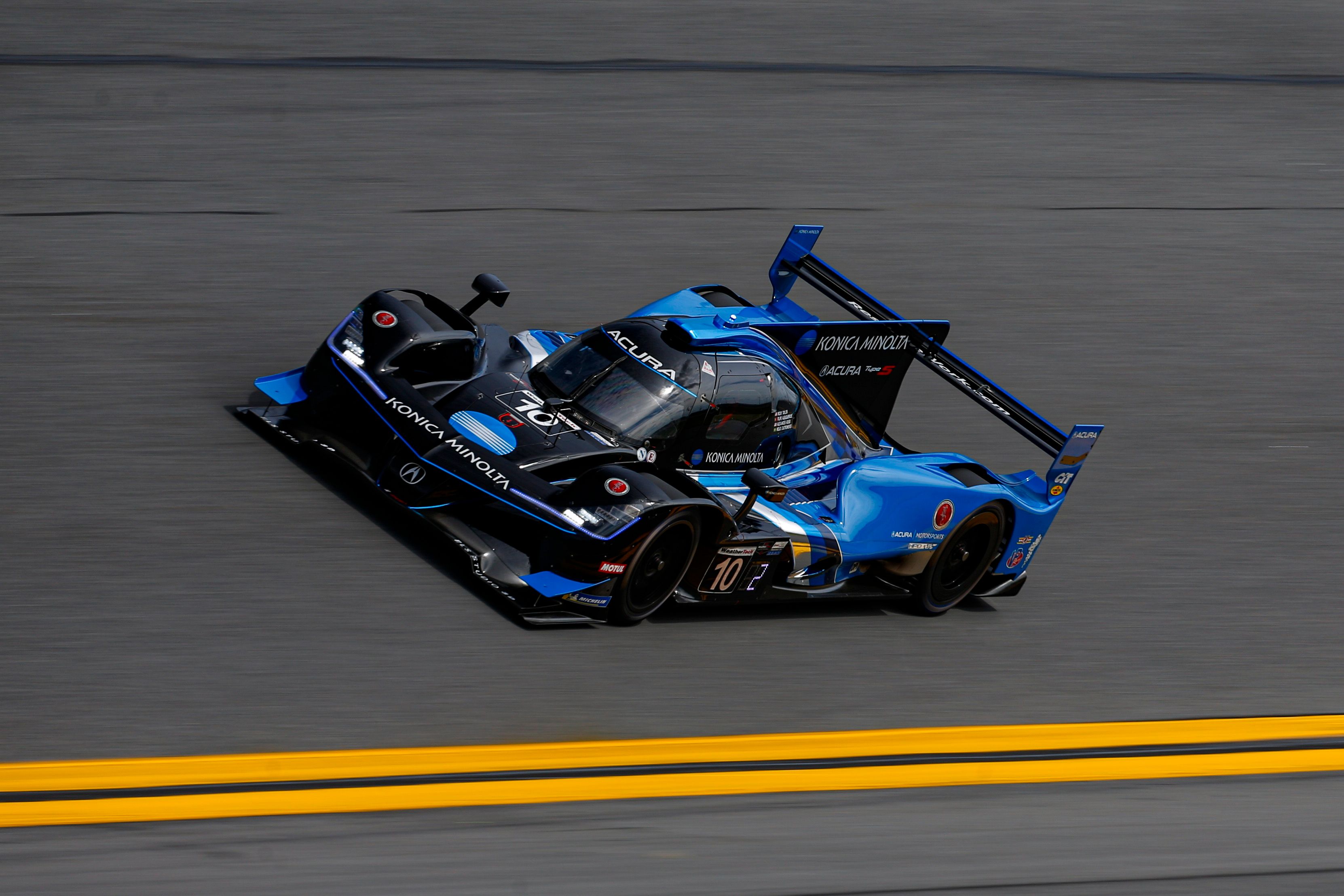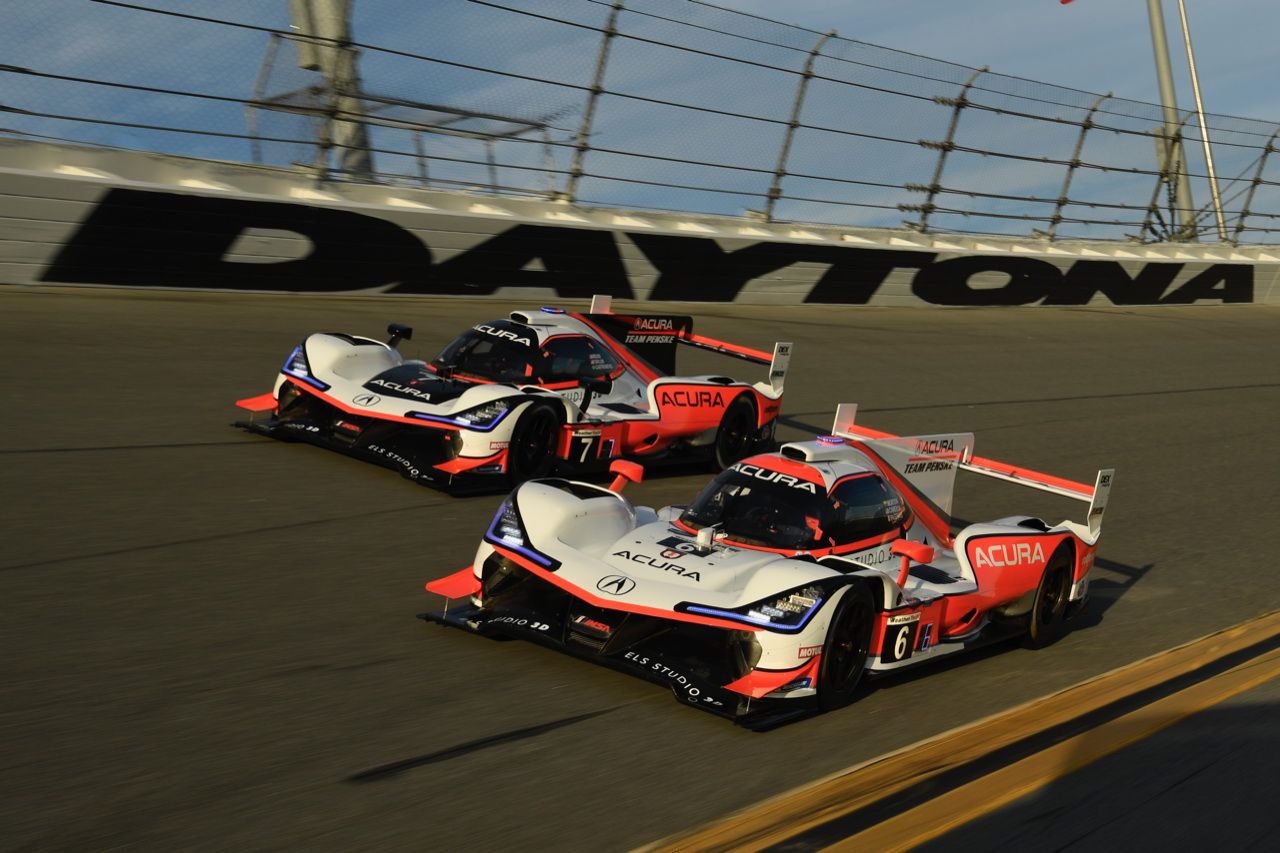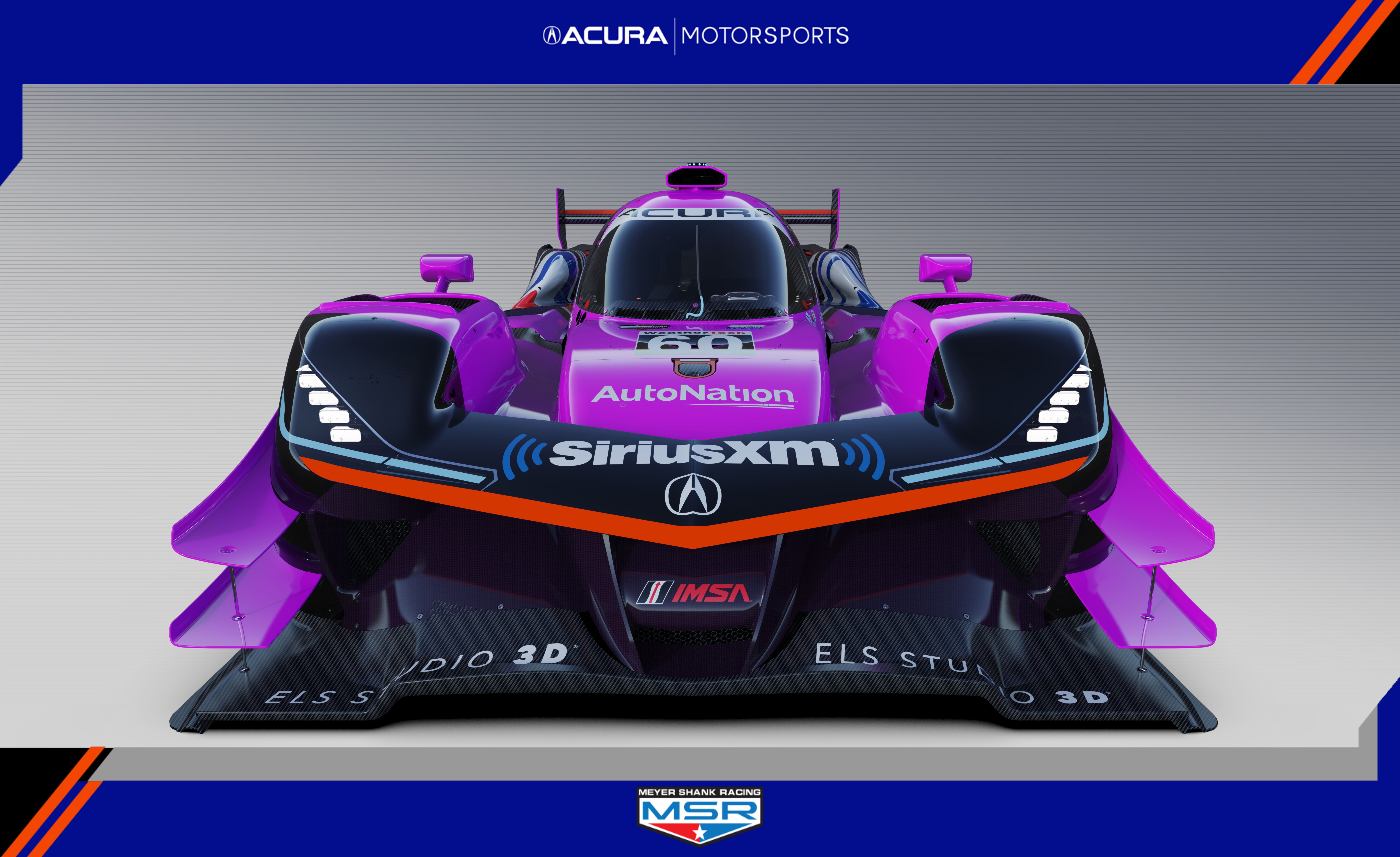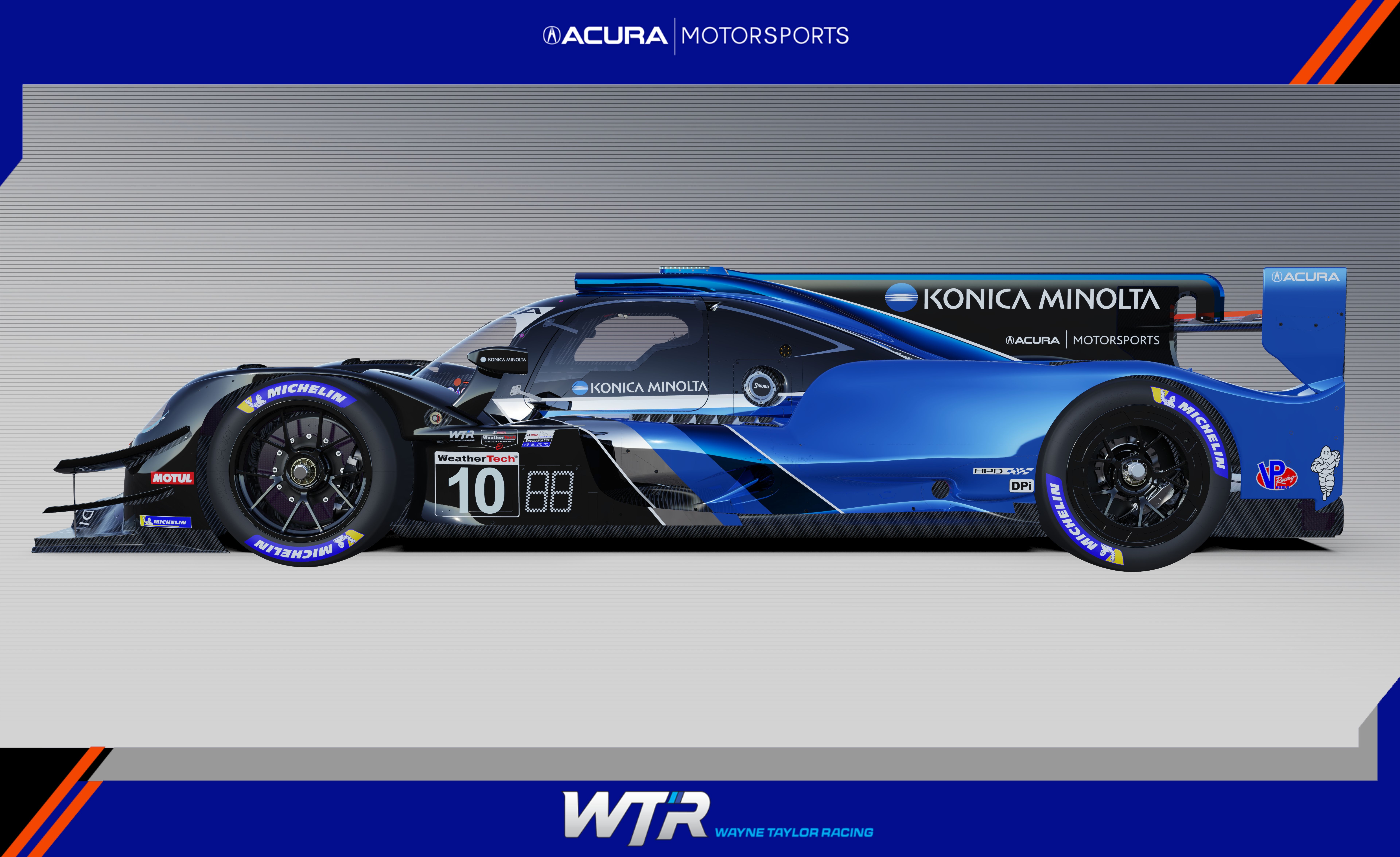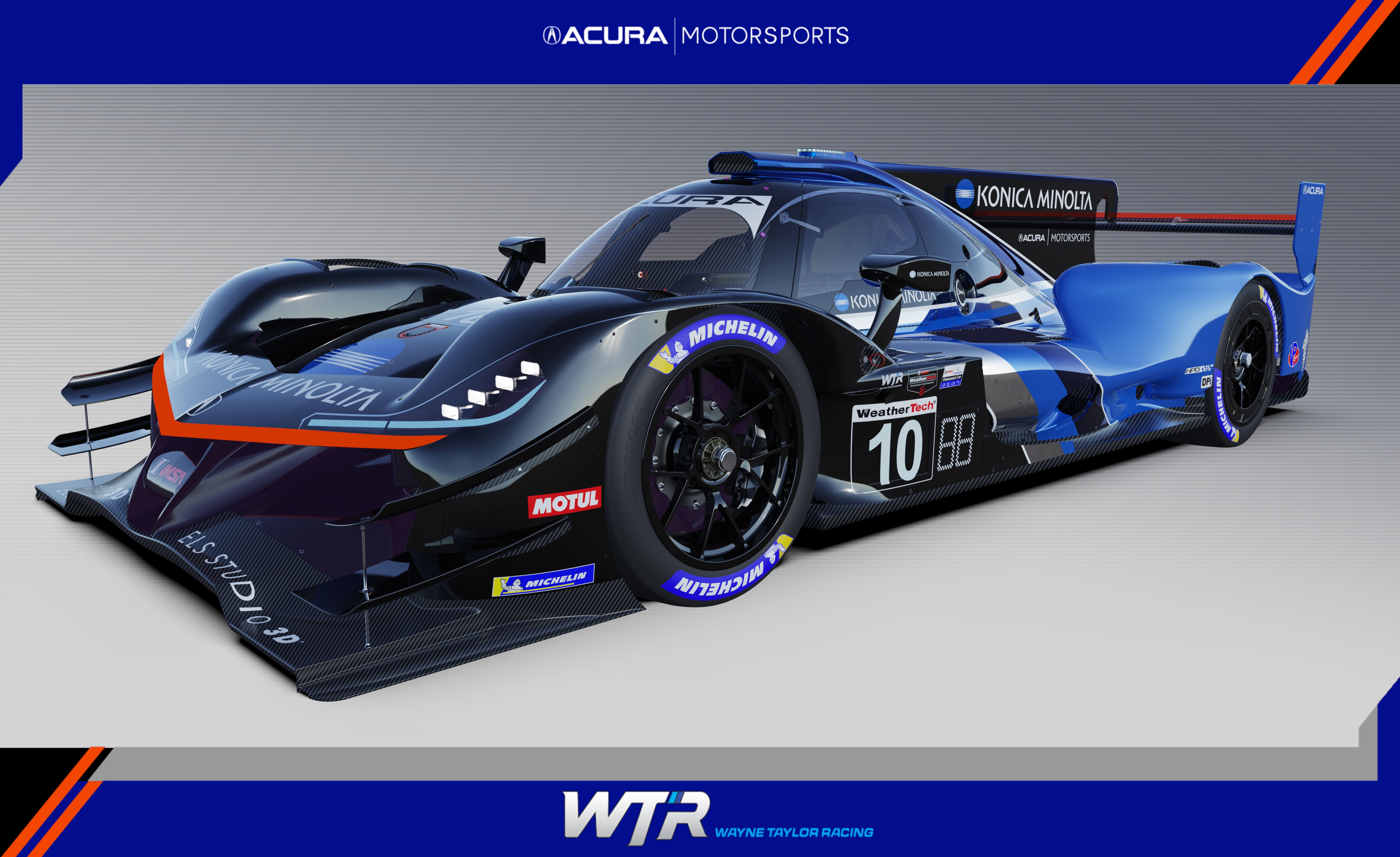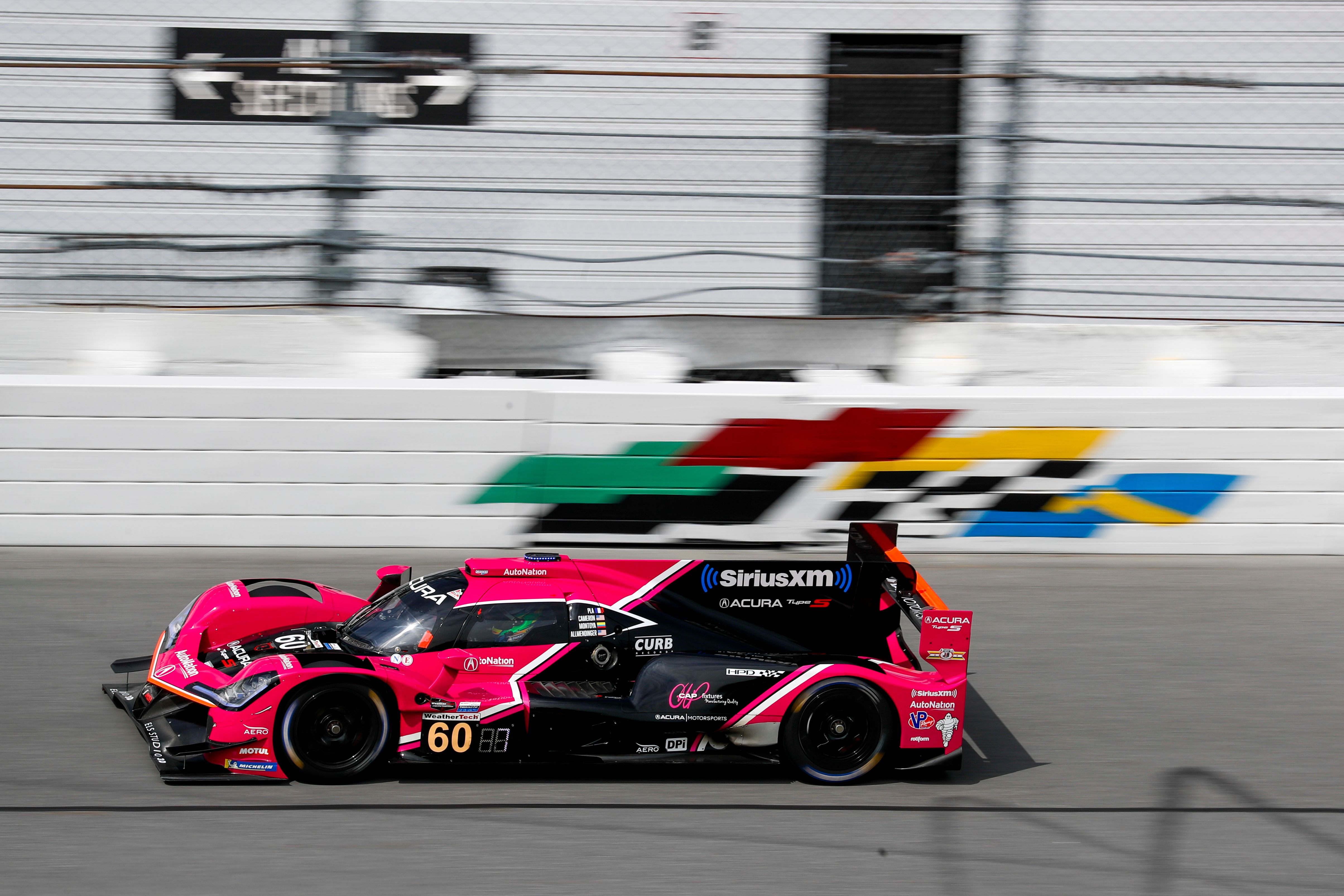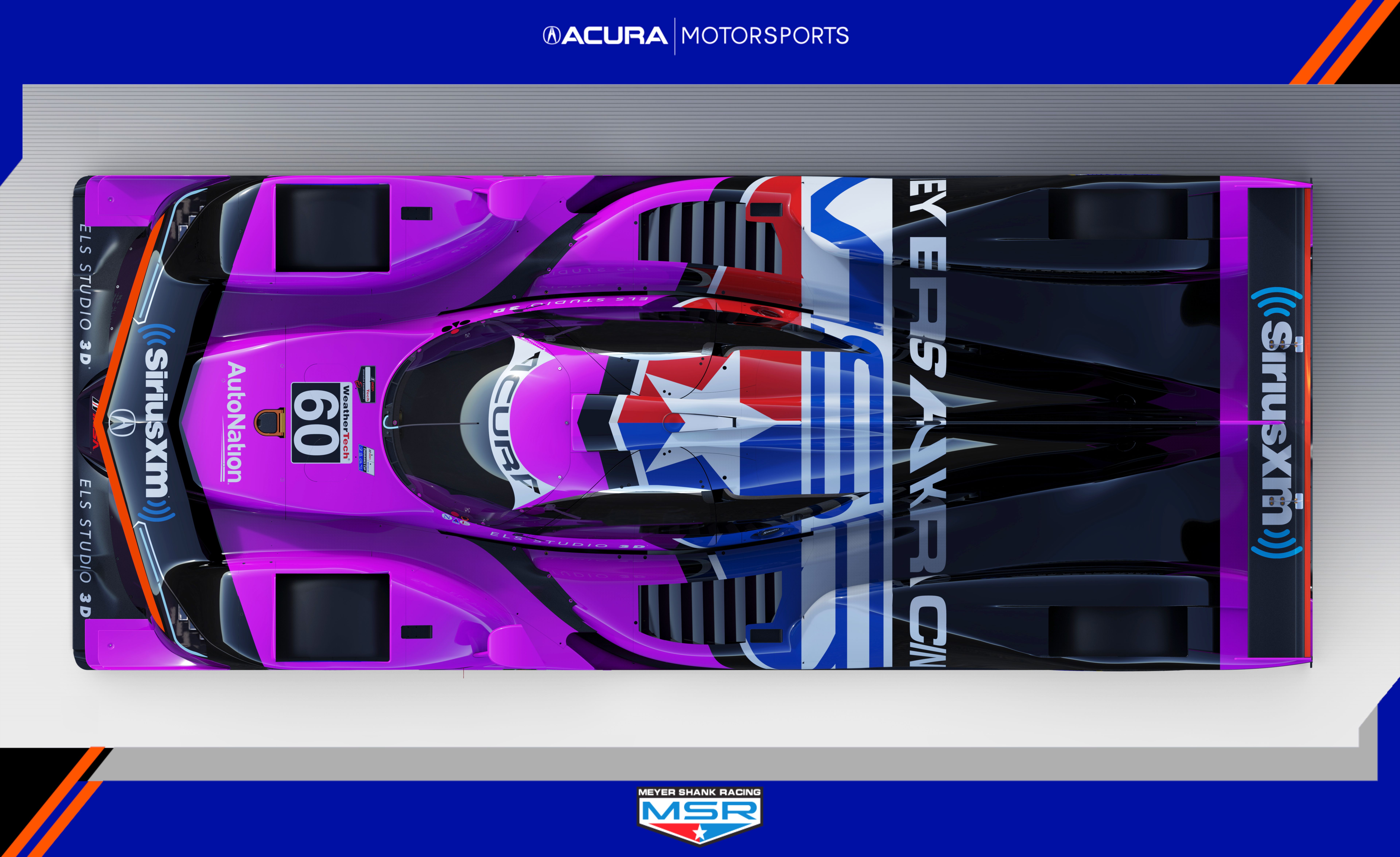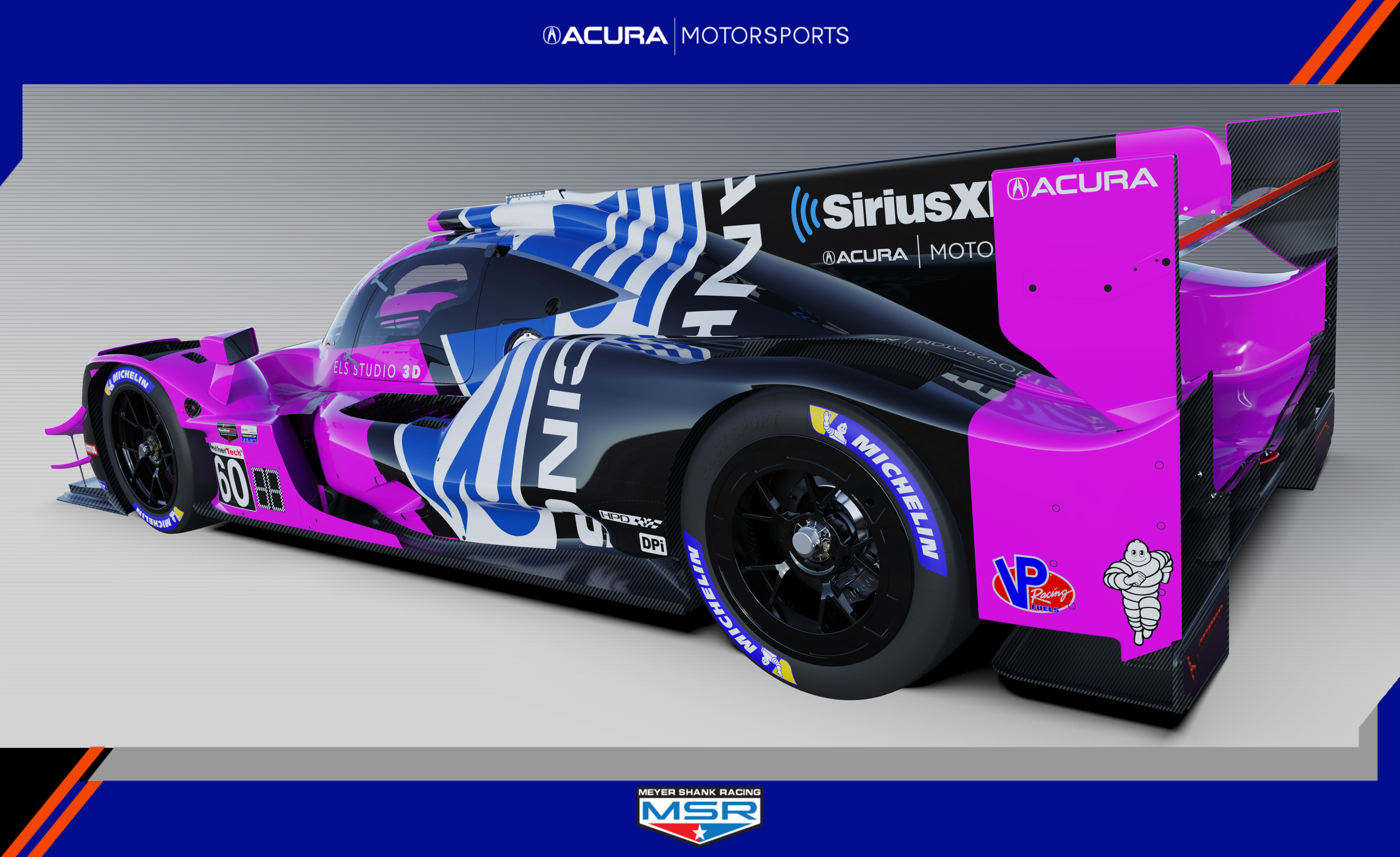Acura, Honda's North American luxury brand that's been active in the world of sportscar racing and beyond for years, will continue being a part of the scenery in the IMSA Weathertech Sportscar Championship's prototype class for years to come with the automaker formally announcing today that it will build a car to the new-for-2023 LMDh ruleset. The car, as ever a product of Honda Performance Development (HPD) will debut in 2023 and will likely face Porsche, Audi, and GM products on the track, although Acura hasn't spoken yet of the chances of running at Le Mans.
Acura spares no words about the FIA WEC
Acura, the defending Manufacturers' champion in the IMSA Weathertech Sportscar Championship, has laid out its plans for the future with the announcement that it will indeed contest the premier North-American sportscar series with a brand-new LMDh car from 2023 onwards. The announcement comes off the heels of both Porsche and Audi committing to the formula with many others still expected to join the fray in the coming months and years.
Four years ago, in 2017, when the DPi formula that's currently sitting at the top of IMSA's pyramid made its debut three manufacturers answered the calling: Nissan, through a partnership between OnRoak Automotive and Scott Sharp's Extreme Speed Motorsports operation, Cadillac, and Mazda. While GM's luxury brand chose Dallara as a basis for its car, Mazda went for the even more problematic Multimatic platform leaving the most successful P2 car, that made by ORECA, as the only one not to underpin a DPi project.
That all changed 12 months later when Roger Penske's mammoth operation rolled into the paddock at the Daytona International Speedway for that year's Roar Before the 24, the traditional weekend of pre-season tests. The Captain had warned everyone about his impending arrival in DPi at the tail end of 2017 through his entry of a stock LMP2 ORECA 07 in that year's edition of the 10-hour-long Petit Le Mans race at Road Atlanta. Indycar stars SImon Pagenaud (previously a factory Peugeot driver) and Juan Pablo Montoya drove the car and an equally impressive driver roster was announced for Penske's first full season with the HPD ARX-05, the fourth and final DPi car to be introduced under the current set of rules.
The announcement made on January 26th allows for speculation on only one more front as GM, the muscle behind the other successful DPi manufacturer, namely Cadillac, is yet to formally announced its program but the wheels are in motion over in Detroit.
"Acura Motorsports today confirmed it will continue to compete in the top category of the IMSA WeatherTech SportsCar Championship in 2023 under the new Le Mans Daytona hybrid (LMDh) format,” the manufacturer declared in a brief press release quoted by RACER Magazine. In response to the announcement, IMSA President John Doonan said, "all of us at IMSA are so excited about the response to the concept of LMDh and global convergence," the former boss of Mazda Motorsports adding that, "given the commitments already announced, and the number of auto manufacturers that continue to study LMDh as a marketing and technology platform, there is a tremendous amount of momentum for the future of our sport."
"Acura has an outstanding record of success in prototype racing, which I experienced as a race fan from a young age and as a competitor in recent years," Doonan went on to say. "On behalf of IMSA, I am proud to continue working with Acura as we work collectively to continue building our sport." He's quietly confident that more major-league manufacturers will confirm their involvement in LMDh before long and the rumor mill suggests that at least three other names are close to reaching the end of their assessment of LMDh with announcements basically around the corner.
While we don't yet know who will build the chassis of the new Acura prototype, there's nothing to suggest that the current partnership with ORECA will cease meaning that the next HPD prototype will likely benefit from a very strong chassis given ORECA's behind the best current LMP2 car in the 07 and, also, the best car to be built under the previous set of P2 rules, the 05. Acura's German rivals have both went the way of Multimatic, the current partner of Mazda, while GM/Cadillac is linked to Dallara for obvious reasons. We've yet to hear anyone go ahead and pick the Ligier P2 car but we think it's only a matter of time until that happens.
As per the much-discussed LMDh rules, the Acura prototype which we won't see on the tracks for two more years will feature custom bodywork inspired by the designs of road-going Acuras and, as a first for IMSA, a spec kinetic energy recovery system (KERS) accounting for 40 horsepower out of the grand total, the ICE making the other 680 horsepower. That output figure is shared between the LMDh cars and the Le Mans Hypercar (or LMH) machines concocted by the ACO, although the latter feature a much more powerful hybrid system powering the front axle that brings the combined total to some 940 horsepower, 60 shy off the combined output of the latest hybrid LMP1 cars.
Acura and its involvement in American sportscar racing
Acura is preparing for another full season of prototype racing in IMSA despite the departure of the Penske cars, the two white cars now ending up in the possession of Meyer Shank Racing and Wayne Taylor Racing respectively. "It’s very exciting news for us as a team,” said Shank quoted by Sportscar365.com. "We know it’s going to be at a very high level. been with them for five years now and their commitment is second to none. I look forward to seeing what their package looks like," he added.
The MSR and Taylor-entered Acuras have already shown what they're made of during last weekend's 100-minute qualifying race at Daytona that decided the grid for the 59th running of the famous race. The MSR-entered example came home fourth in the hands of Dane Cameron and Olivier Pla, A.J. Allmendinger and Juan Pablo Montoya joining Pla and Cameron for the 24. The identical WTR car slotted right behind in fifth overall driven by Filipe Albuquerque and Ricky Taylor. Helio Castroneves and Alexander Rossi are two other drivers in that No. 10 Konica Minolta-backed car.
Both MSR and WTR are going up a very steep learning curve having only recently taken possession of the HPD 05s, the alien-like 2,030-pound prototypes powered by Acura's AR35TT 3.5-liter twin-turbo V-6 engine. As per DPi rules, each manufacturer supplies the engines for its own program with Cadillac most famously coming up with a new, smaller powerplant for the DPi-V.R for 2018 (downsizing from a 6.2-liter V-8 to a 5.5-liter unit). MSR previously campaigned Acura's GT3 offering, the NSX, while WTR was part of GM's list of devotees and won titles and major races together with Cadillac in the current iteration of the IMSA series.
We don't yet know if MSR and WTR will continue as Acura's pole-bearers but it's likely that they will although other teams could join them. Looking back at the history of Acura in American sportscar racing, its first foray came together with Comptech Racing back in the early '90s when a deal was made for Comptech to run Spice chassis powered by the V-6 mill of the original Acura NSX. The package was sturdy enough to allow Parker Johnstone to seal three IMSA GT Lights titles on the trot ('91 through '93), on top of wins at Daytona in '91 and '93, and Sebring respectively in 1993.
The change of hearts over at Acura came when the top brass realized that overall wins in what was then the American Le Mans Series were within reach without breaking the bank by entering a cheaper LMP2 car that had been made to race closer with the big LMP1 cars. A weight advantage kept the smaller P2 (formerly LMP675) cars in the mix as proved by Dyson Racing in '03 with their MG-powered Lolas that could and did beat the all-conquering Audi R8s.
With the decision made, Acura joined the ALMS exactly one year after Porsche did with the RS Spyder. In its first year, the Courage-based ARX-01a LMP2 car was raced by both Andretti-Green Racing and Duncan Dayton's Highcroft Racing. A third team, Fernandez Racing, was contracted to run the 3.4-liter, N/A V-8 in a competing Lola chassis as a benchmark and also in order to gather on and help improve the new unit. The one-season advantage of Porsche and its key partner, Penske, proved important in what would become a hotly contested LMP2 class that often toppled the supremacy of LMP1.
To keep being competitive, the 01a became the 01b ahead of the 2008 season and both Fernandez and Gil De Ferran entered the pretty Acuras despite the fact that they would keep playing catchup to the RS Spyder, arguably the best LMP2 car of its day - so good, in fact, that it won the 12 Hours of Sebring outright beating the diesel-engined R10s. Acura had to wait until 2009 to firmly steal the limelight from Stuttgart's finest. With the conclusion of the Penske gig, the RS Spyder soldiered on in the hands of Cytosport (later Muscle Milk Racing) but Acura decided to move up to LMP1 with the Wirth-developed 02a. The unique machine (it was only used that year) won the title that year with Highcroft Racing, Gil De Ferran winning his last-ever professional race behind the wheel of one (the season-ending Laguna Seca round).
Highcroft Racing continued on in 2010 with a modified version of the ARX-01 (now simply known as HPD, the Acura name having been dropped) and again captured the title. All this success spurred Wirth on as the company kept developing new versions of the 01 (the c, e, d, and g evolutions all existed and raced, either in the US or in Europe) with some of them featuring a new 2.8-liter V-6 turbo (the HR28TT). That engine was outfitted to the 01 ahead of the 2011 season when a new 'cost cap' formula came into being to limit spending in LMP2.
As a gas-powered car battling with the diesel juggernauts, the 01e performed remarkably well on its debut taking third place at Sebring. Sadly, the well ran dry for Dayton and Highcroft, and the car was parked for eternity. But that didn't mean Wirth didn't pursue its P1 aspirations down the line as 2012 coincided with the debut of the FIA WEC and the HPD ARX-03a, a new car that did battle with Lola's last P1 car, the B12/60. Muscle Milk Racing took the last two ALMS titles with the HPD in 2012 and 2013 but Strakka and JRM were less successful in the WEC.
The death of the American Le Mans Series or, rather, the merger between that series and NASCAR's Grand-Am Road Racing Series that gave birth to the current IMSA-sanctioned championship didn't kill the HPD ARX-01.
Extreme Speed Motorsport kept racing the open-cockpit car in 2014 after realizing that Wirth's first stab at building a closed-cockpit Honda-powered prototype was a disaster. That car, the HPD ARX-04 only ever raced once and, in spite of Wirth's arduous work carried out to rid the car of its faults - which did impress some - the car never raced again. But Honda engines remained on the grid, the P2-spec Ligier of MSR racing and winning (with Ozz Negri and John Pew at the time) with Honda power.
Let's now wait and see if the next chapter in Acura's story in sportscar racing will also include some passages about trips across the Atlantic to a certain and very idyllic town in France.
A turbocharged version cropped up ahead of the 1995 edition of the race but even that was no match for McLaren's almighty F1 and Honda went away never to return - although HPD-built P2 cars have been seen at Le Mans in the past decade (Strakka, for instance, raced both ARX-01s and ARX-03a LMP1 cars there). Adding to the list is Extreme Speed Motorsports that competed there as part of its program in the FIA WEC with HPD-engined Ligiers (that won both Sebring and Daytona around that same time).

